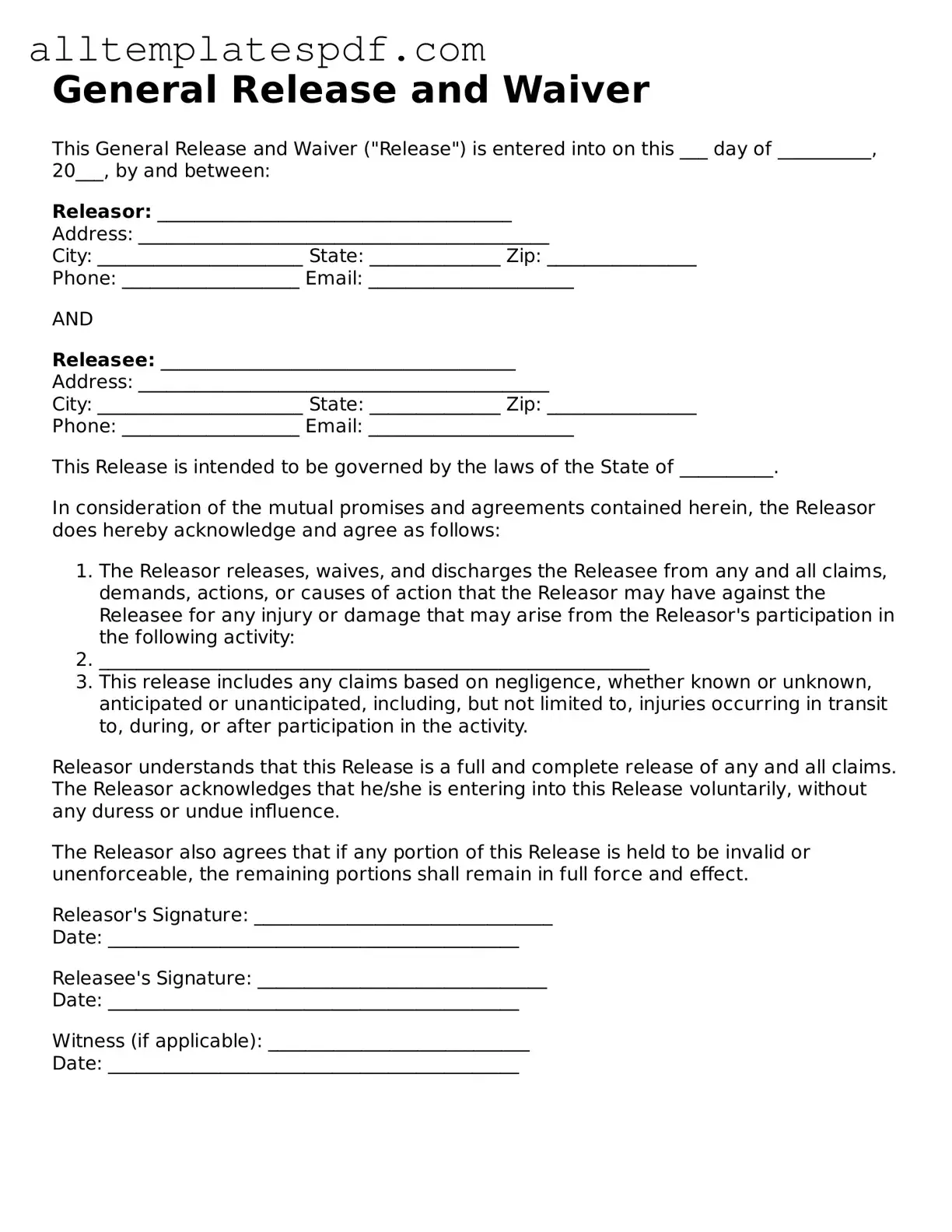Attorney-Approved General Release and Waiver Template
The General Release and Waiver form is a legal document that allows an individual to relinquish their right to pursue claims against another party. By signing this form, you acknowledge that you understand the risks involved and agree to waive any future claims related to the specified activities. If you're ready to protect yourself and move forward, fill out the form by clicking the button below.
Open Editor
